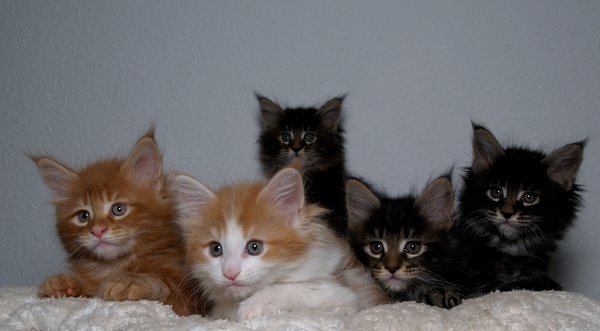Paper Pellet Litter: A Cleaner, Greener Option for Your Cat
Wiki Article

Recently, the trend towards eco-conscious living has encompassed every element of our lives, including our cherished family pets. As family pet owners end up being significantly knowledgeable about the ecological effect of their furry good friends, the need for natural cat litter has actually risen. However what precisely is natural cat litter, and why should animal owners think about making the switch? In this detailed guide, we'll dig into the world of natural cat litter to explore its advantages, choices, and everything else you need to understand.
As ecological awareness grows amongst animal owners, the quest for sustainable cat litter alternatives has taken center phase. Conventional clay-based litters, while popular, position environmental concerns due to their non-biodegradable nature and the ecologically intensive process of clay extraction. This has caused a rise in interest for environment-friendly options that guarantee to be kinder to the planet without compromising on efficiency. This post explores the world of cat litter alternatives, highlighting their advantages, downsides, and what to consider when making the switch.
Clay-based cat litters, especially those that are non-clumping, have actually been the go-to choice for decades due to their absorbency and smell control residential or commercial properties. However, their environmental footprint is worrying. The mining of sodium bentonite, a key part in clumping clay litter, is disruptive to communities. Moreover, these litters do not deteriorate, contributing to land fill waste. Furthermore, the dust from clay litters can be harmful to both human and feline breathing systems, prompting pet owners to look for healthier, more sustainable alternatives.
Eco-friendly alternatives are made from a variety of plant-based products, including recycled paper, wood pellets, corn, wheat, and walnut shells. These products not only break down naturally in the environment however likewise frequently come from renewable resources, minimizing the ecological effect associated with their usage.
Recycled Paper Litter is made from post-consumer paper waste, became pellets or granules. It's extremely absorbent, practically dust-free, and perfect for cats and owners with breathing sensitivities. Nevertheless, it may not manage odors as efficiently as other products and usually does not clump.
Wood Pellets, sourced from lumber scraps, offer a natural pine fragrance that reduces the effects of odors without synthetic fragrances. They're low in dust and take in moisture well, turning into sawdust when wet. The sawdust can be Tofu Cat Litter sifted out, making the litter last longer, though some felines may not choose the bigger pellet size.
Corn and Wheat Litter are known for their clumping capability, comparable to clay litters, making clean-up easy. They're eco-friendly and compostable, with natural enzymes that help control smells. However, they can be more expensive than standard litter and may bring in bugs if not stored appropriately.
Walnut Shell Litter utilizes the natural absorbency of crushed walnut shells, providing exceptional odor control and clumping residential or commercial properties. It's dust-free and eco-friendly but can be more costly and might not appropriate for cats with nut allergic reactions.
Silica gel litter, made from silica dioxide sand, oxygen, and water, is another option to clay. It's highly absorbent, controls smells successfully, and cat litter alternatives is low dust. While not biodegradable, it's lighter and can last longer than clay Modern Litter Boxes litter, requiring less regular modifications. Nevertheless, its higher price point and the texture, which some felines might discover off-putting, are considerations for potential users.
Cats can be specific about their litter. Slowly present the new litter by mixing it with the old, increasing the proportion of the brand-new litter with time to permit your cat to adjust.
Environmental Impact: Think about the lifecycle of the litter product, from production to disposal, to guarantee it lines up with your ecological values.
Health and Safety: Select dust-free or low-dust choices to secure both your and your feline's respiratory health. Ensure the litter is devoid of chemicals or fragrances that might hurt your animal.
Expense: While some options might be more pricey in advance, their durability and the quantity needed per modification can make them cost-effective in the long run.
The Future of Cat Litter Alternatives
The trend towards sustainable pet care products is growing, with innovations in cat litter alternatives blazing a trail. Future developments may include more effective naturally degradable products, enhanced odor control and clumping technologies, and even litter made from upcycled waste products. As consumer demand for environmentally friendly products increases, we can expect to see a broader variety of options that do not jeopardize on benefit or efficiency.
The shift towards sustainable cat litter alternatives is not just a trend however a reflection of a growing awareness of ecological concerns amongst animal owners. While conventional clay litters have dominated the marketplace for several years, the selection of eco-friendly and ingenious materials now available offers appealing choices for those seeking to decrease their ecological footprint. By thinking about aspects such as ecological impact, health and safety, and feline approval, pet owners can make informed decisions that benefit both their furry buddies and the world. As the industry evolves, the future of cat litter looks greener than ever, assuring a great deal for cats, their owners, and the environment.